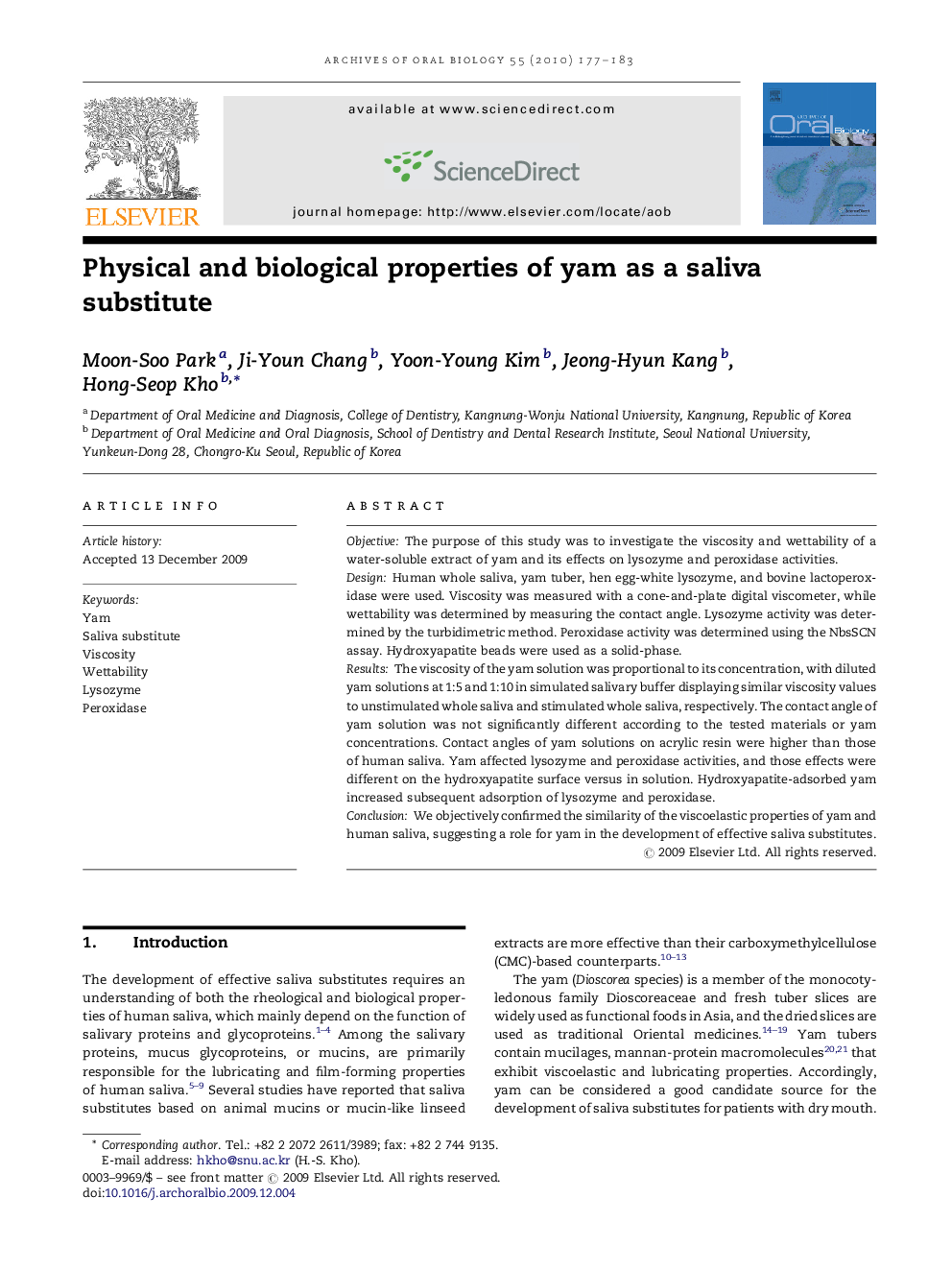| Article ID | Journal | Published Year | Pages | File Type |
|---|---|---|---|---|
| 3121545 | Archives of Oral Biology | 2010 | 7 Pages |
ObjectiveThe purpose of this study was to investigate the viscosity and wettability of a water-soluble extract of yam and its effects on lysozyme and peroxidase activities.DesignHuman whole saliva, yam tuber, hen egg-white lysozyme, and bovine lactoperoxidase were used. Viscosity was measured with a cone-and-plate digital viscometer, while wettability was determined by measuring the contact angle. Lysozyme activity was determined by the turbidimetric method. Peroxidase activity was determined using the NbsSCN assay. Hydroxyapatite beads were used as a solid-phase.ResultsThe viscosity of the yam solution was proportional to its concentration, with diluted yam solutions at 1:5 and 1:10 in simulated salivary buffer displaying similar viscosity values to unstimulated whole saliva and stimulated whole saliva, respectively. The contact angle of yam solution was not significantly different according to the tested materials or yam concentrations. Contact angles of yam solutions on acrylic resin were higher than those of human saliva. Yam affected lysozyme and peroxidase activities, and those effects were different on the hydroxyapatite surface versus in solution. Hydroxyapatite-adsorbed yam increased subsequent adsorption of lysozyme and peroxidase.ConclusionWe objectively confirmed the similarity of the viscoelastic properties of yam and human saliva, suggesting a role for yam in the development of effective saliva substitutes.
